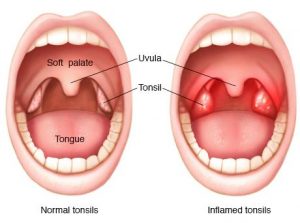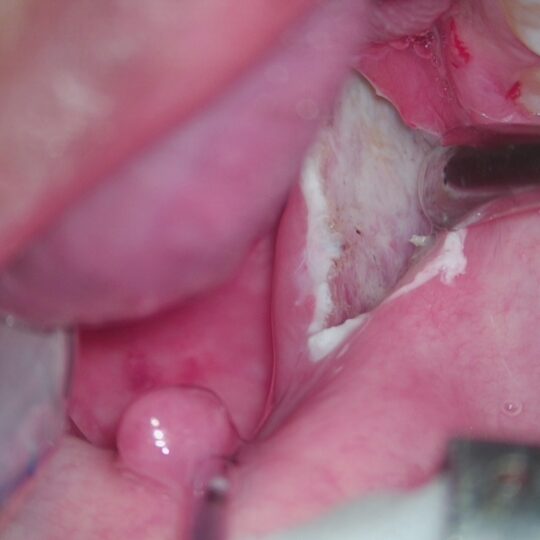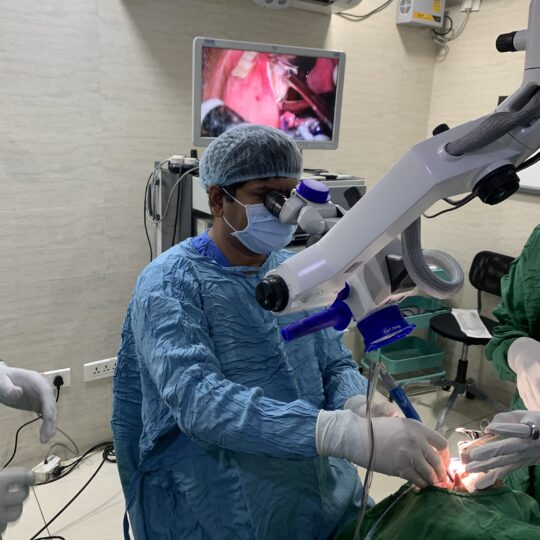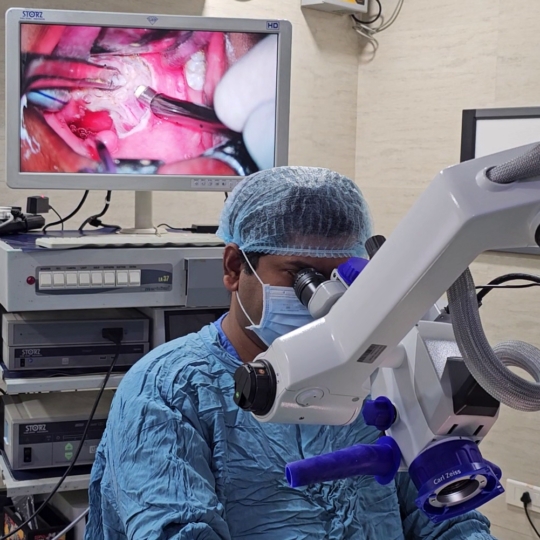Tonsillitis

Overview
Inflamed tonsils
Tonsillitis is inflammation of the tonsils,which are lymphatic tissue at the back of the throat on each side.
Signs and symptoms of tonsillitis include swollen tonsils, sore throat, difficulty swallowing and tender lymph nodes on the sides of the neck.
Most cases of tonsillitis are caused by infection with a common virus, bacterial infections . The most
common type of bacteria involved is streptococcus
Tonsillectomy indication:
Treatment of obstructive sleep apnea/hypopnea syndrome (OSAHS) in pediatric patients
High ASO titre >200
Essential component of uvulopalatopharyngoplasty (UPPP).
Paradise criteria: Recurrent sore throat
7 episodes in a year
5 in 2 consecutive years
3 in 3 consecutive years
Other relative indications: peritonsillar cellulitis or abcess
PANDAS (Pediatric autoimmune neuro psychiatric disorders associated with streptococcal infections
Halitosis, dental malocclusion, controlling chronic pharyngeal carriage of group a beta haemolytic streptococci
Types of tonsillectomy procedures
- Conventional tonsillectomy
- Laser assisted tonsillectomy
- Coblation technology
We prefer coblation tonsillectomy which is the most recent intervention for tonsillar surgery.
Mechanism of coblation – An electrical field is generated between the active electrode(s) and the return electrode which interacts with surrounding fluid (e.g. saline) to excite electrolytes and molecules in the solution, creating a high-density energy field called glow plasma. Ions and molecules of the tissue absorb this energy causing the tissue particles to vibrate resulting in heat.
Post Operative Care and Instructions Following Tonsillectomy
The following instructions will help you know what to expect in the days following surgery. Do not, however, hesitate to call if you have any questions or concerns.
Physical Activities
After this surgery, children should rest but may play inside after one or two days and may be outside after seven days, if they feel up to it. Strenuous physical activity following surgery is discouraged. Children may return to school after one week when they are comfortable; but 10 days is not unusual.
Diet
The more your child drinks, the sooner the pain will subside. Water, apple juice, juice, ORS juices are excellent sources of liquid. Soft foods such as ice cream, sherbet, yogurt, pudding, apple sauce and jello, should also be encouraged. Other soft, easily chewed foods are also excellent. Avoid hot or spicy foods, oily or foods that are hard and crunchy. Often, chewing gum speeds comfortable eating by reducing the spasm after surgery and can be started anytime after surgery. Detailed precautions about diet will be explained by us during discharge.
Pain
For the first several days (occasionally up to 10 days) following surgery, pain in the throat is to be expected and will be bearable due to postop analgesic. Avoid medication containing aspirin, other anticoagulant or antiplatelet drugs 2 weeks prior and after surgery. Ear pain, especially with swallowing is also a common occurrence; it is not an ear infection but due to referred pain from the surgery

Contact us
Bayya Hospitals
12-25-192, Bhagath Singh Centre, Kothapet, Guntur, Andhra Pradesh 522001
0863-2225729
+91 6304429294
+91 93819 22827
Useful Links
Consultation Hours
For ENT
Monday – Saturday 9AM – 1:30 Noon,
Evening 5:30PM to 8:00PM
Sunday – CLOSED
For EYE
Monday – Saturday 9AM – 5:00PM
Sunday – CLOSED



